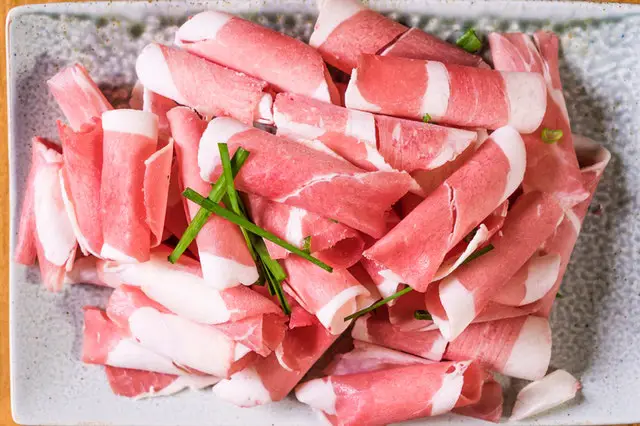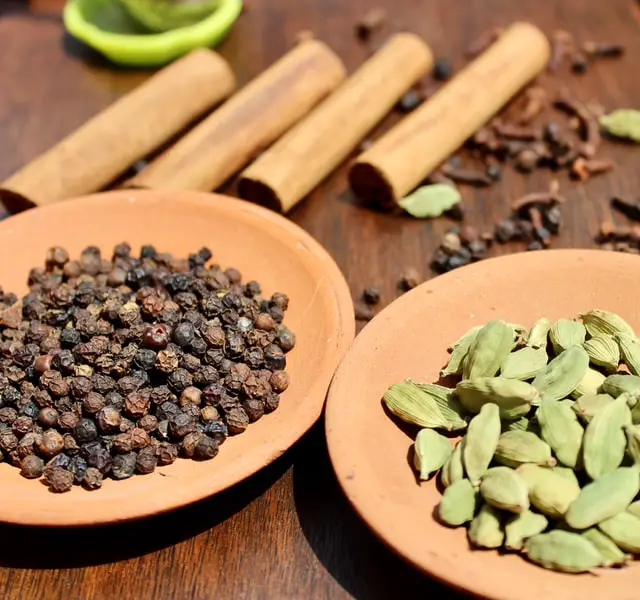Why is prosciutto so expensive?
Prosciutto is a type of dry-cured ham that is traditionally made in Italy and is known for its delicate flavor and texture. The process of making prosciutto is a long and labor-intensive one, which is why it is considered to be a luxury food item and is often quite expensive.
The first step in making prosciutto is selecting the right pig. The pig must be of a certain breed, usually a large white pig, and must be raised in a specific way. The pig must be fed a diet that is high in protein and low in fat and must be raised in a clean and healthy environment. Once the pig is ready, it is slaughtered and the hind legs are carefully selected for prosciutto production.
The next step is the curing process, which is where the true art of prosciutto-making comes in. The hind legs are first cleaned and then seasoned with a mixture of salt, pepper, and other spices. The legs are then hung in a curing room for several months, where they are exposed to a constant flow of air and are monitored for temperature and humidity. The curing process is essential for developing the unique flavor and texture of prosciutto.
After the curing process is complete, the legs are then aged for several more months. The aging process allows the flavors to develop further and gives the prosciutto its unique texture. The legs are then inspected for quality and only the best are selected for sale.
One of the main reasons that prosciutto is so expensive is the length of time it takes to make it. The curing and aging process can take up to two years, and the process is entirely done by hand. This means that the cost of labor is very high, and the process is very time-consuming. Additionally, the cost of raising the pig, the cost of curing and aging, and the cost of inspection all contribute to the high cost of prosciutto.
Another reason that prosciutto is so expensive is that it is a luxury food item. Prosciutto is considered to be a delicacy and is often served in high-end restaurants and at special events. The demand for prosciutto is high, and as a result, the price is also high.
Finally, the cost of importing prosciutto also contributes to its high price. Prosciutto is traditionally made in Italy and is often imported to other countries. The cost of shipping and customs fees can add a significant amount to the final price of prosciutto.
In conclusion, prosciutto is a luxury food item that is made from a specific breed of pig that is raised in a specific way, cured, and aged for several months. The process is labor-intensive, time-consuming, and expensive, which is why prosciutto is considered to be a luxury food item and is often quite expensive. Despite its high price, many people consider it to be worth the cost, as the unique flavor and texture of prosciutto are truly unmatched.
Frequently Asked Questions:
What is prosciutto?
Prosciutto is a type of Italian dry-cured ham that is traditionally made from the hind leg of a pig. The meat is salted and seasoned, then aged for several months to develop a rich, complex flavor and a delicate texture. Prosciutto is often served as an appetizer or in sandwiches, and it is also used as an ingredient in many Italian dishes such as pasta and risotto.
How to make prosciutto?
- Start by selecting a high-quality pork leg that is free of any blemishes or discoloration.
- Trim off any excess fat and remove the bone from the pork leg.
- Rub a mixture of salt, sugar, and spices (such as black pepper, juniper berries, and garlic) onto the pork leg, making sure to cover it evenly.
- Place the pork leg in a large plastic bag and seal it tightly.
- Hang the pork leg in a cool, dry, and well-ventilated area for at least 12 months.
- During the curing process, monitor the temperature and humidity levels to ensure that the pork leg is drying evenly.
- Once the prosciutto is cured, remove it from the bag and wipe off any excess salt.
- Slice the prosciutto thinly and serve as a charcuterie board, on a sandwich, or with pasta dishes.
How to eat prosciutto?
- Slice the prosciutto thin: Using a sharp knife, slice the prosciutto as thin as possible.
- Serve it as an appetizer: Prosciutto can be served as an appetizer on a platter with bread, crackers, or crostini.
- Wrap it around fruits or vegetables: Wrap thin slices of prosciutto around fresh fruits such as melon, figs, or pears, or vegetables such as asparagus or bell peppers.
- Use it as a topping: Prosciutto can be used as a topping for pizzas, salads, or sandwiches.
- Cook with it: Prosciutto can be used to add flavor to pasta dishes, risotto, or soups.
- Enjoy it on its own: Prosciutto can also be enjoyed on its own as a snack or a part of a charcuterie board.
- Pair with wine: Prosciutto pairs well with a variety of wines, including red and white wines, sparkling wines, and fortified wines.
How long does prosciutto last?
Prosciutto can last for up to 2 weeks in the refrigerator if it is properly stored in an airtight container or wrapped in plastic wrap. If it is vacuum-sealed, it can last for up to 3 months in the refrigerator. However, it is best consumed within 1-2 weeks for optimal flavor and texture. Once opened, it should be consumed within a few days.
How to cook prosciutto?
- Preheat the oven to 375°F (190°C).
- Place the prosciutto on a baking tray lined with parchment paper.
- Bake the prosciutto in the preheated oven for 10-15 minutes, or until it is crispy and golden brown.
- Remove the prosciutto from the oven and let it cool for a few minutes before slicing.
- Slice the prosciutto thinly and serve as a topping for salads, pizzas, or sandwiches, or as an appetizer with crackers and cheese.
Alternatively, you can pan-fry prosciutto in a skillet over medium heat for 2-3 minutes on each side, or until crispy and golden brown.
What is prosciutto meat?
Prosciutto is a type of Italian dry-cured ham that is made from the hind leg of a pig. It is typically salt-cured and then aged for several months, giving it a distinct salty, savory flavor. The meat is typically thinly sliced and served as an appetizer or used as a topping on sandwiches or pizzas. It is also often used in cooking to add flavor to dishes such as pasta and risotto. Prosciutto is considered a delicacy and is often served with cheese, fruit, or bread.
How to fold prosciutto?
- Start by laying the prosciutto out on a clean cutting board or plate, with the thicker end facing towards you.
- Gently lift the top layer of the prosciutto and fold it in half, bringing the thicker end towards the thinner end.
- Repeat this process until the prosciutto is folded into a neat, compact package.
- If you are storing the prosciutto for later use, wrap it tightly in plastic wrap or aluminum foil to keep it fresh.
- If you are serving the prosciutto as a garnish or appetizer, you can slice it into thin strips or bite-sized pieces and arrange it on a platter or plate.
- Enjoy your delicious, folded prosciutto!
What does prosciutto taste like?
Prosciutto has a delicate and slightly salty taste with a hint of sweetness. It has a smooth, silky texture and a distinct, rich flavor that is characteristic of cured meats. The flavor is also slightly nutty and has a slightly gamey taste. Overall, it has a complex, rich, and savory taste that is perfect for pairing with cheeses and bread.
What kind of meat is prosciutto?
Prosciutto is a type of dry-cured ham made from the hind leg of a pig or wild boar.
What is prosciutto made of?
Prosciutto is made from the hind leg of a pig, typically the thigh. The meat is seasoned with salt and other spices, then air-dried and aged for several months to develop its distinctive flavor and texture. It is typically thinly sliced and served as a cold cut or used as an ingredient in various dishes.
What cheese goes with prosciutto?
Mozzarella and Parmesan are commonly paired with prosciutto. Other options include Gouda, Fontina, and Brie.
Where does prosciutto come from?
Prosciutto comes from Italy. It is typically made from the hind leg of a pig and is cured through a process of salting and aging. The most famous type of prosciutto is Prosciutto di Parma, which comes from the region of Parma in northern Italy. Other famous types of prosciutto include Prosciutto di San Daniele and Prosciutto di Modena.
How to serve prosciutto?
Prosciutto can be served in a variety of ways, depending on the occasion and personal preference. Here are a few popular options:
- As an appetizer: Thinly sliced prosciutto can be served on a platter with crackers, bread, or crostini. It can also be rolled up with figs, melon, or cheese for a delicious and easy appetizer.
- In a salad: Prosciutto can be added to a mixed greens salad, arugula salad, or Caesar salad for a burst of flavor and texture.
- In pasta dishes: Prosciutto can be sautéed with garlic and onion and added to pasta dishes such as carbonara or fettuccine alfredo.
- In sandwiches: Prosciutto can be added to sandwiches such as paninis or subs for a delicious and satisfying lunch option.
- As a topping: Prosciutto can be thinly sliced and used as a topping for pizza, risotto, or polenta.
- With fruit: Prosciutto pairs well with many different fruits, such as fresh figs, sliced peaches, and apricots.
Whatever the way you serve it, it’s a delicious way to enjoy Prosciutto.
What to do with prosciutto?
- Wrap it around melon or figs for a sweet and salty appetizer.
- Layer it on top of a pizza or flatbread for added flavor.
- Use it as a topping for a salad, such as a Caesar or arugula salad.
- Roll it up with mozzarella cheese and basil for a delicious bruschetta.
- Wrap it around asparagus or green beans for a simple and elegant side dish.
- Layer it on a sandwich or panini for added flavor and texture.
- Serve it as a charcuterie board item with other cured meats and cheeses.
- Use it as a topping for a risotto or pasta dish.
- Make a Prosciutto-wrapped chicken breast or a fish fillet for a main dish.
- Add it to omelets or frittatas for added flavor and protein.
What is prosciutto di parma?
Prosciutto di Parma is a type of dry-cured ham that is produced in the region of Parma, Italy. It is made from the hind legs of specially bred pigs and is known for its sweet, nutty flavor and tender texture. The curing process, which involves salting and aging the meat for a minimum of 12 months, gives Prosciutto di Parma its distinctive taste and texture. It is often thinly sliced and served as an appetizer or used as a topping for sandwiches and pizzas. Prosciutto di Parma is protected by the European Union’s Protected Designation of Origin (PDO) designation, which ensures that it is produced in a specific geographical area and follows traditional methods.
How to crisp prosciutto?
- Preheat your oven to 350°F (175°C) and line a baking sheet with parchment paper.
- Lay the prosciutto slices on the baking sheet, making sure they do not overlap.
- Place the baking sheet in the oven and bake for 8-10 minutes, or until the prosciutto is crispy and golden brown.
- Remove the baking sheet from the oven and let the prosciutto cool for a few minutes before serving.
- If you want it extra crispy, you can also heat a skillet over medium-high heat. Add the prosciutto and cook for 1-2 minutes on each side, or until crispy and golden brown.
- Once crispy, remove from the skillet and let cool for a few minutes before serving.
Note: The cooking time may vary depending on the thickness of the prosciutto slices. Keep an eye on them while they’re in the oven or skillet to ensure they don’t burn.
What is the difference between prosciutto and pancetta?
Prosciutto and pancetta are both Italian cured types of meat, but they are made from different cuts of pork and have different flavor profiles and uses.
Prosciutto is made from the hind leg of a pig, specifically the thigh. It is dry-cured for several months and is typically thinly sliced and served uncooked as an appetizer or in sandwiches. Prosciutto has a delicate, sweet, and nutty flavor.
Pancetta, on the other hand, is made from the belly of the pig. It is also dry-cured but for a shorter period than prosciutto. Pancetta is usually diced or thinly sliced and cooked before being used in dishes such as pasta, risotto, or soups. Pancetta has a rich, salty, and slightly sweet flavor.
In summary, Prosciutto is a dry-cured meat made from the hind leg of a pig, while Pancetta is a dry-cured meat made from the belly of a pig.
How to tell if the prosciutto is bad?
To tell if the prosciutto is bad, you should look for signs of discoloration, an off smell, or a slimy texture. Fresh prosciutto should be a pink or reddish color and should have a mild, salty smell. If the prosciutto is discolored or has an off smell, it may be spoiled and should not be consumed. Additionally, if the prosciutto has a slimy texture, it may also be spoiled. It’s always better to err on the side of caution and discard any prosciutto that appears or smells spoiled.
What makes prosciutto special?
Prosciutto is a type of dry-cured ham that is made from the hind leg of a pig. It is known for its unique flavor, texture, and aroma. There are a few factors that make prosciutto special:
- The curing process: Prosciutto is dry-cured, which means that it is salted and then left to air-dry for several months. This process not only preserves the meat but also allows it to develop its distinct flavor and aroma.
- The breed of pig: Prosciutto is traditionally made from heritage breeds of pigs, such as the Parma or San Daniele pig. These breeds are known for their high-quality meat and marbling.
- The location: Prosciutto is a protected designation of origin (PDO) product, meaning that it can only be made in specific regions of Italy. The most famous regions for prosciutto are Parma, San Daniele, and Modena. The specific microclimates and production methods in these regions contribute to the unique flavor of the prosciutto.
- The slicing: Prosciutto is traditionally sliced paper-thin, allowing for a delicate texture and the full expression of its flavor.













